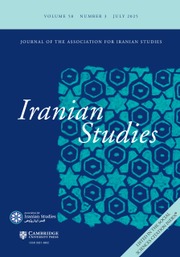With time, historians of Eurasia are beginning to take hold of the 1990s. An increasing number of monographs have dealt with the aftermath of the Soviet collapse, relying on archives in post-Soviet countries, oral history interviews, and memoirs by eyewitnesses to the events. Given the influence of the Cold War legacy in shaping today’s international relations—with myriad of scholars, pundits, and journalists debating a ‘new Cold War’ between the United States and either Russia or China—these monographs are fundamental to understanding both how the Cold War ended and what went wrong in its aftermath across the post-Soviet space. Across all these books, one question lingers: why did, with few exceptions, the democratization of the post-Soviet countries fail?
Isaac McKean Scarborough’s Moscow’s Heavy Shadow is part of this emerging historiography of the Soviet collapse. Uncharacteristically, it deals with Tajikistan—one the smallest and least studied of the Soviet republics. Interestingly, unlike most books on Tajikistan, Scarborough’s book does not focus on the Tajik Civil War (1992–97) but on the period right before the outbreak of violence. Instead of analyzing the crystallization of rival regional and ideological coalitions, their military engagements in the south of Tajikistan, and, eventually, the drawn-out negotiation process—mediated by Russia, Iran, Afghanistan, and Uzbekistan—that brought the war to a resolution, the book deals with the prelude to violence in the late Soviet period. Across eight chapters covering 1985–1992, the book discusses the road to conflict and answers the question of why—unlike in many other parts of the former Soviet Union where similar nationalist trends existed—a violent war broke out in Tajikistan.
To tackle this question, Scarborough relies on a wide array of sources from Russian and Tajik archives and takes a unique approach. While Mikhail Gorbachev’s perestroika and glasnost reforms of the Soviet economy and politics have often been analyzed, most scholars have taken a country-level view, paying little attention to the concrete effects of these reforms in remote corners of the Soviet Union. By contrast, Moscow’s Heavy Shadow offers a unique look into the effects of perestroika and glasnost in a specific Soviet republic: Tajikistan. While doing so, the book makes a provocative argument. Most of Tajikistan’s problems, its collapsing economy and rising social woes in 1989–90, came not because of the failure of Gorbachev’s reforms and resistance to them by local hardline communist party cadres, but because the reforms worked as planned. The Kremlin’s incompetent reform program triggered an economic and social crisis that precipitated the political collapse and violence in Tajikistan. Indeed, while the Soviet economy was slowing down in the 1980s, living standards were rising in Tajikistan. Unlike many Soviet people living in the western parts of the USSR, who increasingly took the West as a point of comparison for living standards, most Tajikistani were fine with how things were going in the USSR in the 1980s. As Scarborough writes, to Tajikistanis, ‘life often seemed much better than the macro-economic statistics showed’ (p. 30). Existing problems in the mid-1980s ‘were seen as eminently solvable within the Soviet system’ (p. 30).
This insight is essential at three levels. First, it stresses, unlike most of the historiography, that for all their personal qualities and belief in democratization, Gorbachev and his advisers were incompetent reformers. They had little idea of how economic processes worked. Second, as Scarborough repeatedly shows, these reformers cared little for the margins of the Soviet Union. While protests flared up in Dushanbe, Tajikistan’s capital, in February 1990, Gorbachev and other Moscow-level politicians avoided mentioning these at the Third Congress of People’s Deputies in March. Perestroika was conducted with the western parts of the Soviet Union in mind. Finally, analyzing the impact of perestroika in Tajikistan helps demonstrate how this economic mismanagement precipitated violence there in 1992 and points to Gorbachev’s responsibility. To use Stephen Kotkin’s expression, ‘Armageddon’ had been ‘averted’ in the wake of the Soviet collapse, but the latter triggered conflicts that left thousands of people dead in Tajikistan, Georgia, Armenia, Moldova, and Chechnya in the 1980s and 1990s.
Beyond this, Moscow’s Heavy Shadow offers another significant insight. Throughout the book, Scarborough fascinatingly emphasizes how politicians in Dushanbe—communists and opposition reformers alike—deferred to Moscow. In 1991, as Scarborough notes, ‘Tajikistan was nominally independent and sovereign and yet de facto still part of the USSR’ (p. 131). Meanwhile, ‘everyone in Dushanbe acceded to [the] authority’ of Moscow’s envoys (p. 131). The story Scarborough recounts is thus one of an almost involuntary independence. Elites in Dushanbe tried, until the end, to remain part of a reformed Soviet Union, not looking for an independence that many of them could not conceive. Even after independence was achieved, elites in Tajikistan—neo-communists and opposition forces—reached out to the now independent Russia to play the role of power broker in the civil war. The overwhelming majority of politicians in Dushanbe assumed that Tajikistan would stay in Russia’s orbit.
Moscow’s Heavy Shadow touches here upon an important aspect of the Soviet collapse that is sometimes overlooked by scholars. Attitudes toward Moscow varied greatly across different Soviet republics. Too often, historians present the Soviet collapse as resulting from a uniform tide of rising nationalism that engulfed the entire Soviet Union and pushed all republics toward independence. As Scarborough shows for Tajikistan, some republics were rather content with the Soviet status quo and did not seek independence. Ironically, it was the Kremlin, particularly Gorbachev, that pushed the Tajik elites toward increased autonomy by advising them to declare ‘sovereignty’ in 1990 (p. 110).
Moscow’s Heavy Shadow is a brilliant book that tackles a largely under-studied topic. It does so by astutely alternating between different scales and levels of analysis, building on a largely unexplored archival record. The book is sure to constitute a major addition to the historiography of the Soviet collapse and be relevant to seasoned scholars and graduate students alike. Importantly, it is written in a vivid and dynamic style that makes the book’s reading very pleasant.


